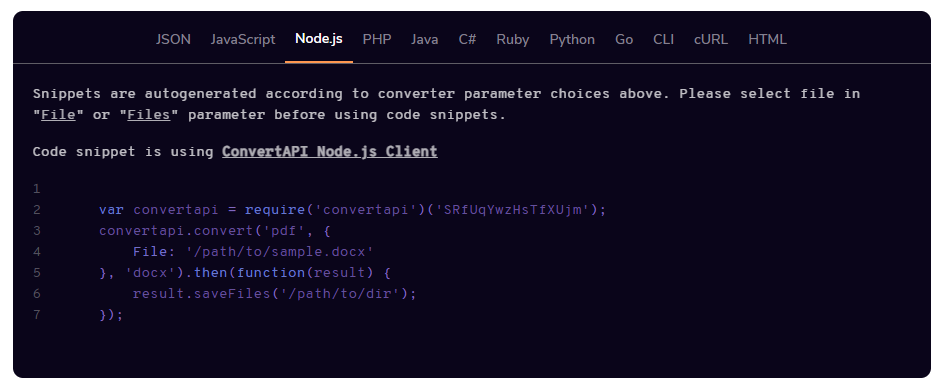

We need to create the file where we will write the documentation. This can be achieved by leveraging the components I mentioned above and taking advantage of the constants file/s used in your API. This is outstanding for many reasons I will talk about later. From describing parameters to making authentication and authorization schemes. I promise you will be hooked on documentation! Yes, you will enjoy doing documentation due to its user-friendly system. You can also frequently reuse components and the generic information is simple to complete. The properties that you need to complete in every endpoint are always the same and there are only a few.

Nodejs document code#
Luckily, we have this great tool that allows us to start improving our code documentation. We prioritize moving forward with the code without worrying about explaining what we are doing. We all agree that documentation is necessary but we never stop to get it done. Based on our research, the best option was by far OpenApi 3 (A.K.A Swagger). The time had come to document our API’s endpoints.

We combined different technologies a key one being NodeJS. It has users, products, dispatch flows, finances, purchase orders and logistics modules, all involving 6 API’s that interact with each other in a microservice architecture. I am currently working on one of the most complex: a marketplace app. IntroductionĪt Wolox we are developing plenty of projects. In our next tutorial – Node.js MongoDB Find, we shall learn to query documents from MongoDB Collection.How to take your project to the next level with OpenApi3/Swagger. In this Node.js MongoDB tutorial : Node.js – Insert Document(s) to MongoDB Collection, we have learnt to insert one or more documents to MongoDB Collection using insertOne() and insertMany() methods, from Node.js Application using mongodb package. MongoDB Tutorial – Learn MongoDB from basics with Examples. The first entry was from first example, and the rest three have been inserted with this example. Var MongoClient = require('mongodb').MongoClient Var url = "mongodb://localhost:27017/newdb" Node-js-mongodb-insert-document.js // we create 'users' collection in newdb database In this example, we will use insertOne() method and insert a document to MongoDB Collection via Node.js program. The callback function receives error and result object as arguments.Įxample 1 – insertOne() – Insert Document via Node.js This Node.js Callback Function is called after Node has tried creating a collection, and ready with the result. Single document that has to be inserted to MongoDB CollectionĪrray of documents to be inserted to MongoDB Collection Name of the new MongoDB Collection, that we would like to create InsertMany() db.collection().insertMany(, ) Parameter InsertOne() db.collection().insertOne(, ) Step 6: Insert documents to specified MongoDB Collection.įollowing is the syntax of insertOne() and insertMay() methods used to insert documents to collection in MongoDB from Node.js. If the connection is successful, the db object points to the database, newdb. Once the MongoClient is done trying to make a connection, the callback function receives error and db object as arguments.

Step 5: Make connection from MongoClient to the MongoDB Server with the help of URL. var MongoClient = require('mongodb').MongoClient mongodb://127.0.0.1:27017Īppend the Database name you want to connect to (say newdb), to the base URL. While the Mongo Shell starts up, it echoes back the base url of MongoDB. Step 2: Get the base URL to MongoDB Service.Ī simple hack to know the base url of MongoDB Service is to Open a Terminal and run Mongo Shell. Run the following command to start MongoDB Service. Steps – Insert Documents to MongoDB Collection via Node.jsįollowing is a step by step guide with an example to insert documents to MongoDB Collection from Node.js Application.


 0 kommentar(er)
0 kommentar(er)
